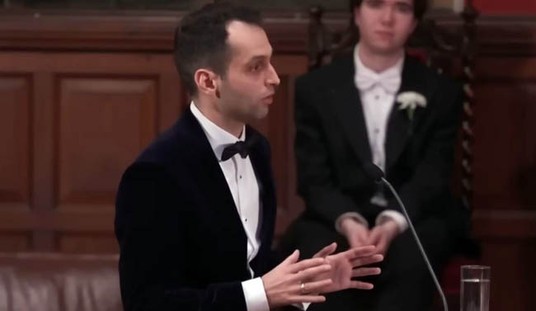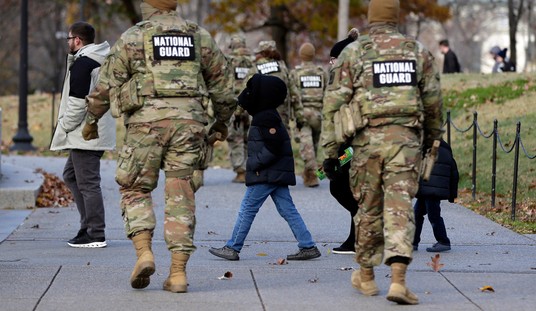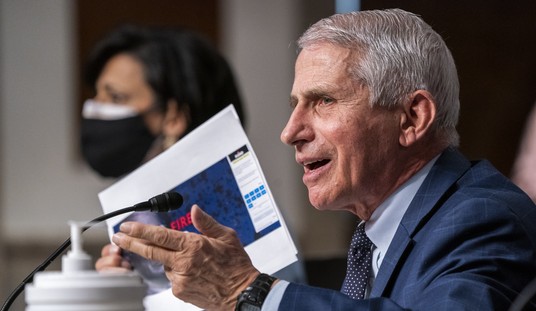Is there actually hope for an independent bid as an alternative to the Donald Trump/Hillary Clinton Hobbesian choice in November? Not really, but let’s play along with this poll for a moment anyway. The Hill’s Jessie Hellmann reports that a Data Targeting survey taken last week shows a majority in favor of having that alternative in November … theoretically, anyway:
Fifty-five percent of voters and 91 percent of voters under the age of 29 favor having an independent in the race, according to a new Data Targeting poll. Sixty-five percent said they are willing to support a candidate who isn’t Clinton or Trump.
The desire for a third option in the race reflects widespread dissatisfaction with the two likely nominees. Both Trump and Clinton have low favorability numbers, making them among the most disliked general election candidates in recent history.
Sure they do … in concept (and the poll itself has some issues, addressed in the addendum below). Lots of people want to break out of the two-party, lesser-of-two-evils presidential paradigm in which we live every four years. But would they actually vote for an independent? History says no, and it’s not just that we actually do have alternatives on the ballots every four years. Libertarians, Greens, the Constitutional Party, and others routinely offer candidates who never manage to break out of single digits, and usually don’t even crack the decimal point.
The last time a indie bid won a single Electoral College vote was in 1968, a cycle of political and social division unseen in a century. Even so, George Wallace still only got 46 EC votes from the then-Democratic South, while Richard Nixon cruised to the White House with 301 for the GOP. H. Ross Perot spent a fortune in 1992 building the Reform Party, got on all 50 ballots, and still got just 19% of the popular vote and zero ECs. The closest he came to winning a state was in Maine, where he came in second with 30% of the vote. And Perot started that effort in February 1992, not in May or June, when ballot access deadlines have actually passed in Texas and are rapidly approaching for other states.
This survey relies on fantasy and denial, but so does the current belated independent-bid movement. It ignores the fact that both Trump and Hillary will get nominated not by a narrow clique within their parties, but with either a dominant plurality or outright majority. The illusion that Trump somehow doesn’t represent Republican voters at this stage is a dangerous one, I argue in my column for The Week, but isn’t the only part of reality that some refuse to recognize:
However, the Politico analysis should strip some illusions from conservatives as well. Trump didn’t “hijack” the Republican Party, nor did open primaries and caucuses prevent conservatives from beating Trump. Trump won a number of closed-primary states, including the critical Florida primary, and in such diverse states as Kentucky, Louisiana, Arizona, and the five northeastern “Acela Corridor” states in which Trump won landslides. Trump dominated Republicans and independents in these states. Trump became the frontrunner and remained on top with both constituencies by venting their anger over Republican impotence on immigration, and by taking a hard-line position that has its best support within the party, not outside of it.
That isn’t an endorsement of the results; it’s merely a recognition of reality. Donald Trump will be the Republican presidential nominee in November, for better or worse. He will be one of two rational and viable choices for voters, with Hillary Clinton all but certain to be the other option. While other candidates can get on the ballot (and will), they have no chance of winning the election. Experience and history, as well as the calendar and ballot access laws, make this reality clear.
Acknowledging reality does not require one to vote for Trump in November. No politician is “owed” a vote by anyone, within or outside of a party; a candidate has to earn that vote. But for those who want to start moving the Republican Party back to conservative principles, refusing to acknowledge that reality will only delay success. Tearing the party apart with an ill-conceived and nonsensical independent bid might doom it forever, leaving the party with Trump and his supporters for a generation — and conservatives with nothing to influence.
Let’s not forget, too, that the pollster conducted this survey in the first few days of Trump’s win, and while Bernie Sanders remains dug into his campaign for the Democratic nomination. After California’s primary, we can expect to see the bitterness of these divisions dissipate for many voters, who will then turn their attention to November. Hillary’s PUMAs evaporated within a fortnight of the Democratic convention in 2008, and this year we have almost four months between the conventions and the election. The favorability of the two candidates may not change much, but the focus on reality will.
Addendum: The poll itself is rather … odd. The report starts off with this statement from the pollster: “It is no secret that our firm has been involved in the research and conversations regarding the possibility of an independent candidacy for President of the United States.” That sounds like a position of advocacy rather than analysis. The questions are not provided, which makes it difficult to tell whether this is a legitimate measure of public opinion or a push poll.
Also, finding 3 seems both obvious and self-defeating:
3. In a ballot test against Clinton and Trump, a truly independent candidate starts off with 21% of the vote.
- This number increases to 29% in the “Big Sky” region, 30% in “New England” and 28% in the “West” region.
- Among voters with an unfavorable opinion of both Trump and Clinton, the independent actually wins the ballot test:
- TRUMP: 11%
- CLINTON: 7%
- INDEPENDENT: 56%
It shouldn’t be a shock that those who dislike Candidates A and B would vote for Candidate C. The fact that only 56% do gives a great big hint about the futility of this project. So do the percentages in finding 3. What do the percentages 29, 30, and 28 have in common? They would all be losing percentages in three-way contests. At the moment when bitterness runs most high, this poll shows that there is no chance for victory even for a generic candidate against Trump and Hillary, even assuming one could put together a 50-state independent run, which is impossible at this point in the cycle.
That’s reality.
Addendum II: Chris Cillizza calls this “the dumbest poll about a third party candidate I have seen in a long time.” He makes a reference to Dumb & Dumber in his post, but let me quote Opus from Bloom County in response: “Well, maybe not that bad, but Lord, it wasn’t good.”









Join the conversation as a VIP Member